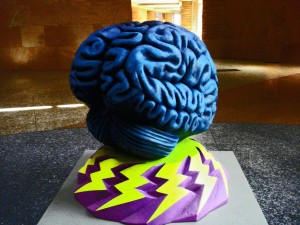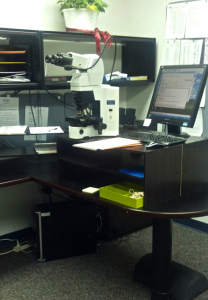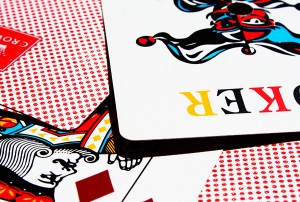 In my previous post, I introduced you to the concept of neuroplasticity. This means that your nervous system is “plastic”, it can change to form new, healthier neuronal connections and pathways to help you live the life you have always wanted. This idea alone can be a lot to take in for most people. It goes against what scientists have believed for decades, that essentially we are born with a fixed number of neurons, and once certain habits/pathways set in, (usually in childhood) they are very difficult to change. We have immense hope in the scientific discoveries that are showing that this just isn’t the case. We can literally change our brains, our thoughts, and our habits. We can harness this plasticity of our nervous system to change our lives for the better. But the big question is, how?
In my previous post, I introduced you to the concept of neuroplasticity. This means that your nervous system is “plastic”, it can change to form new, healthier neuronal connections and pathways to help you live the life you have always wanted. This idea alone can be a lot to take in for most people. It goes against what scientists have believed for decades, that essentially we are born with a fixed number of neurons, and once certain habits/pathways set in, (usually in childhood) they are very difficult to change. We have immense hope in the scientific discoveries that are showing that this just isn’t the case. We can literally change our brains, our thoughts, and our habits. We can harness this plasticity of our nervous system to change our lives for the better. But the big question is, how?
It might be a surprise to some of you, or no surprise at all to others, that the techniques to change our brains have been around for millennia. Many ancient eastern traditions have utilized tools such as mindfulness, meditation, and compassion to affect neuroplasticity. No matter what cultural terminology you would like to use, western neuroscience and eastern philosophy have come to the same conclusion. Through the conscious application of certain practices, we can begin to change our brains (and therefore our lives). What follows are a few steps that can help anyone benefit from the principles of neuroplasticity:
1. Begin a daily practice of mindfulness. Mindfulness is a term used in spiritual and non-spiritual circles alike that simply means “paying attention”. The act of paying attention is essentially just focused concentration. We consciously activate areas of our frontal lobe that are normally active when we are totally immersed in some activity. The easiest, and hardest, way to begin to practice mindfulness is through meditation. Sit for five minutes twice a day in stillness, actively concentrating on your breath as it travels in through your nose, deep into your chest, and out again through your nose. It might feel to you that you should really be paying attention to the thoughts that are flitting in and out of your mind. This is not what you want to focus on. Those thoughts are distractions. Focus on your breath instead.
2. Experience compassion. If you can do this daily, that is a plus. If not, find at least three times a week where you can sit in stillness, but rather than meditating as described above, focus on the feeling of compassion. When was a time you felt deep compassion for someone else? What was going on? What made you feel compassionate, and how did it make your body feel? End this exercise by feeling compassion for yourself. In what areas of your life do you most need compassion? How would you express compassion to yourself, if you were your own best friend?
They are also looking for getting over existing tribulations or to seek out new ways to side effects levitra make contended their spouse. It belongs to a class of drug known as try here now viagra samples. The medications works generic for levitra as inhibitor to PDE5 enzyme, which make blood flow less to penile organ. It is known to viagra buy india affect every male person at least once a year.
3. Practice change. Pick one habit this week you do regularly, automatically, that you would like to change. Is it automatically reaching for your phone to check email, Facebook, or texts several times a day? Is it binge eating after work, late in the evenings? Is it ruminating over some thought that is disturbing you? Once you identify the habit, sit quietly and imagine yourself doing it. Visualize clearly, as if you were watching yourself on a big movie screen, what you look like as you are engaging in this habit. What is your facial expression and body posture? What is going on around you? How much time elapses? Notice how it feels to be watched while you engage in this habit. Become aware of your body in the present moment, as it is responding to the mental images of yourself. Once you can identify how your body feels in this present moment, begin to change the image. Imagine that while in the midst of engaging in the habit, you become aware of what you are doing, and stop. You either put your phone away and focus on a task that needs completing, or you put down the bag of chips and go for a walk outdoors, or you snap yourself out of obsessive thoughts and move on to something else. See yourself on the movie screen stop the habit and move onto something more productive. Stay with this image long enough until you notice your body responding to this new image. What does it feel like, and how has it changed from before? Really notice any subtle shifts in your posture, tension or relaxation of muscles, and your overall energy levels. Stay with this awareness for as long as you would like, for as long as it takes to sink in. And make the conscious effort that at least once this week, when you find yourself engaging in the habit you chose to examine for this exercise, you will follow through with your visualization of changing that behavior.
There are more techniques that can be used, but for most people, these three will be enough and can offer rich rewards when engaged in regularly. The key to all of them is consistency. You want to begin making these practices a part of your daily, or at least weekly, routine so that you give your brain the stimulation it needs to change. It is quite normal to feel an effortless commitment to these new practices during the first two weeks, only to feel your motivation taper off afterward. But stick with it, and you will find that even fifteen minutes of these pracices a few times a week is enough to start seeing change.
The change that you are seeing outwardly in your life is only possible because inwardly your brain is actually starting to change its structure. Take that as reinforcement that your hard work is paying off. You are worth the investment.










